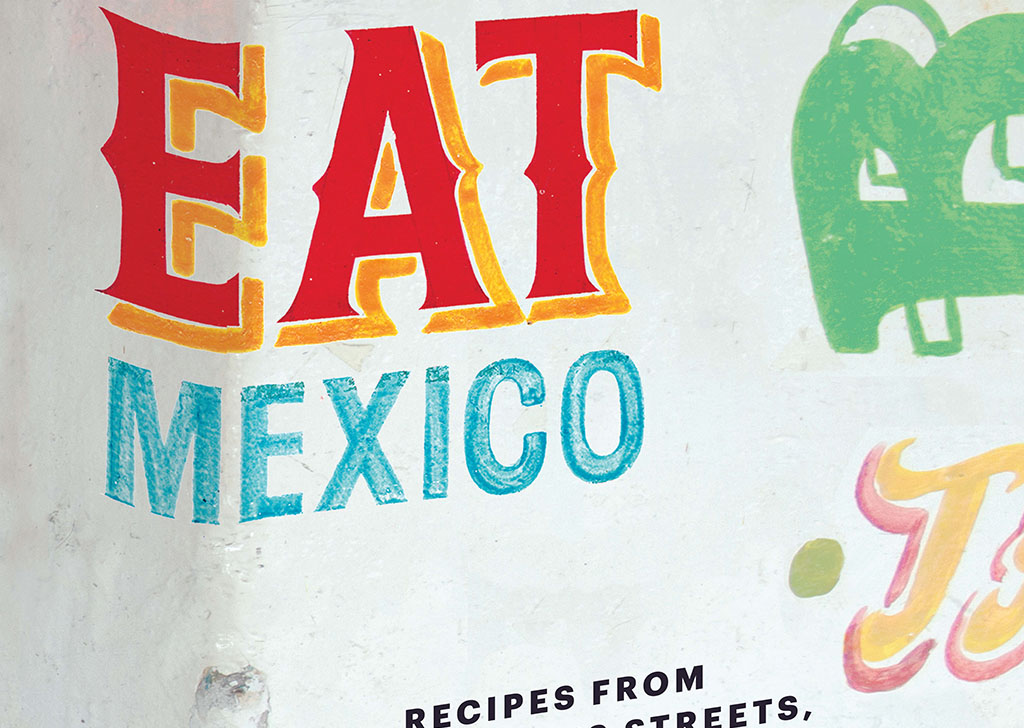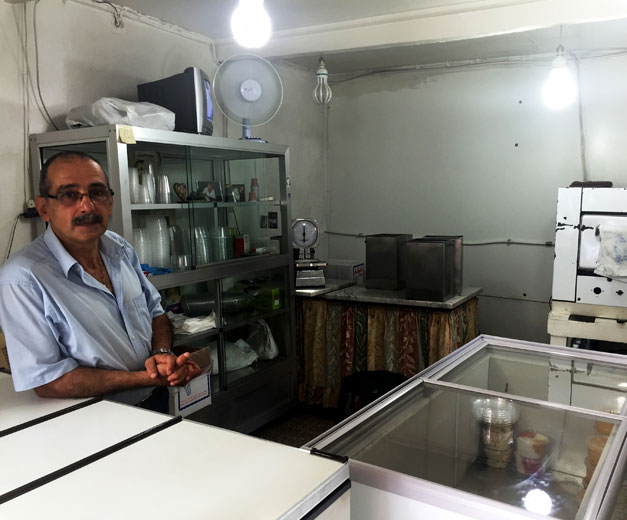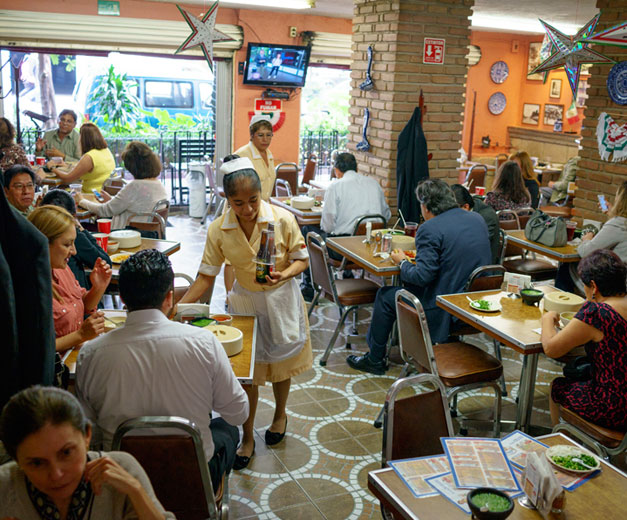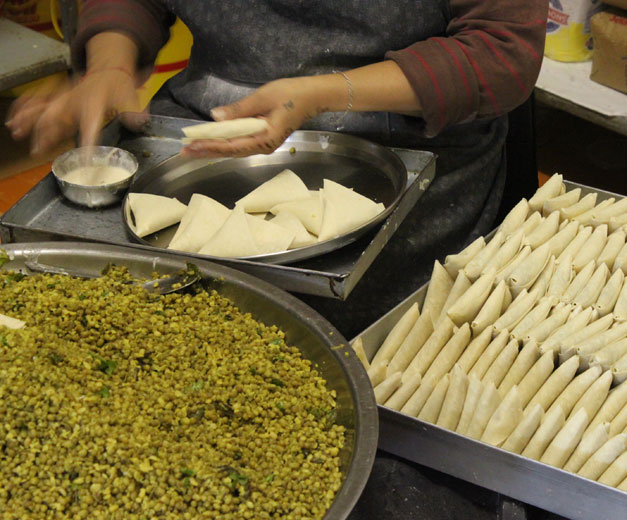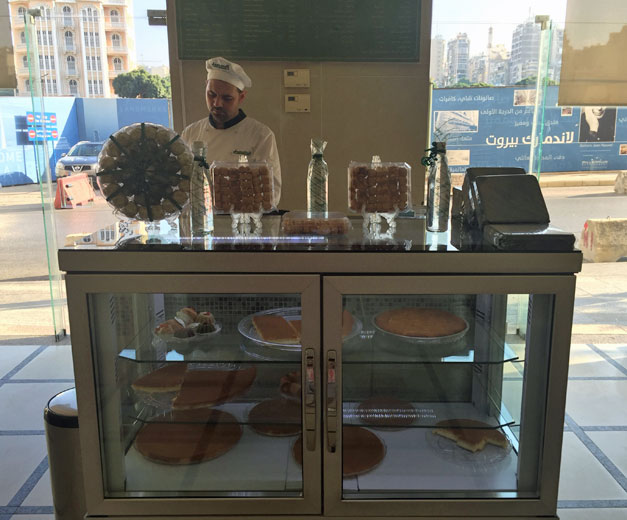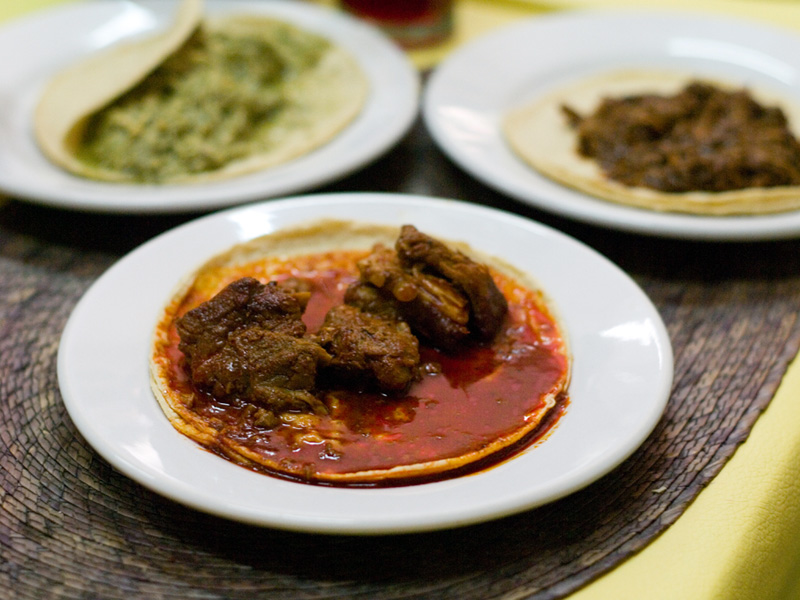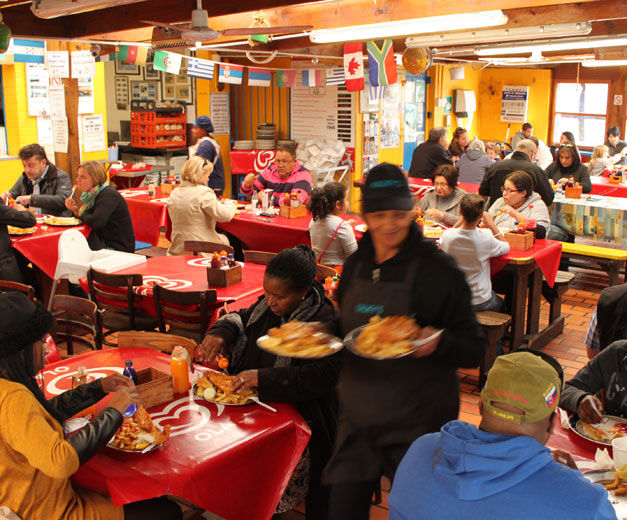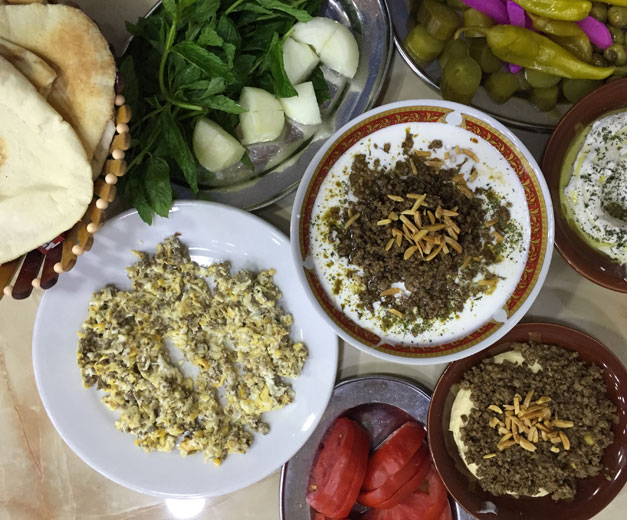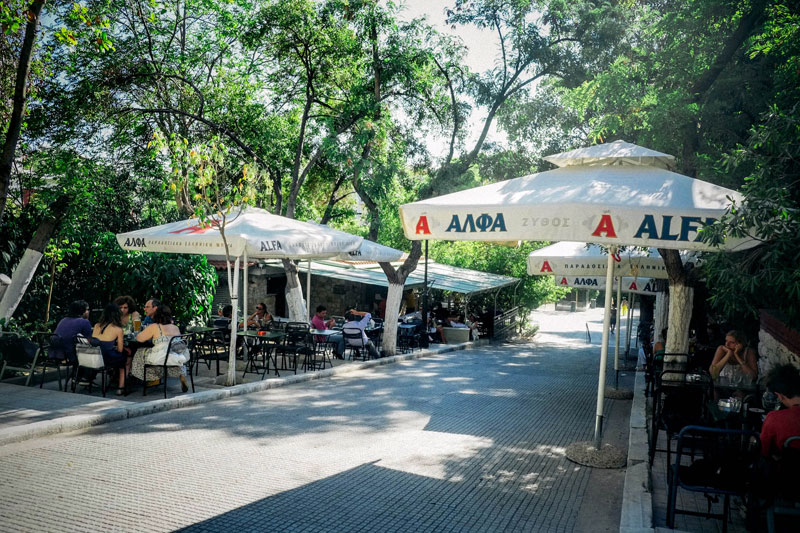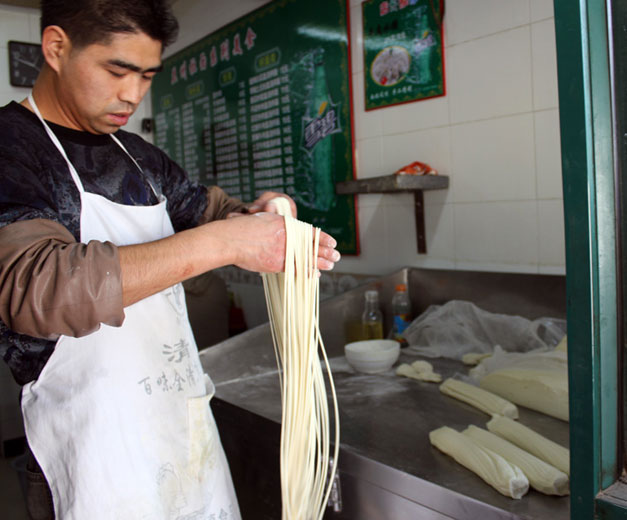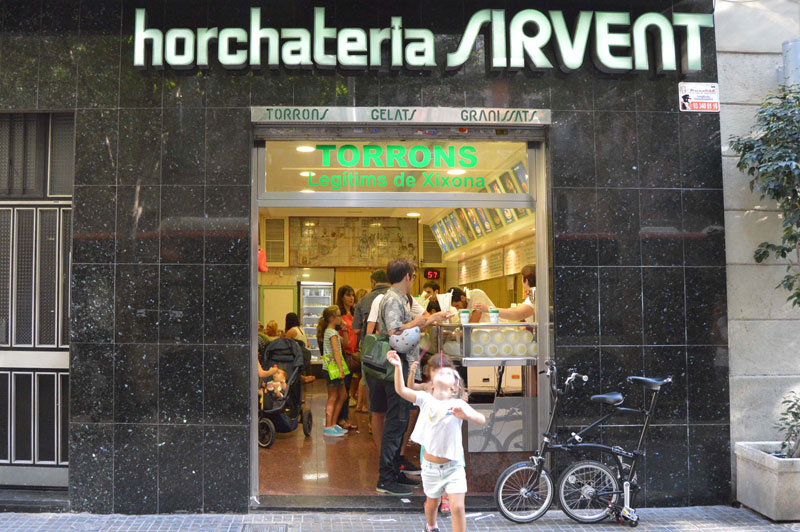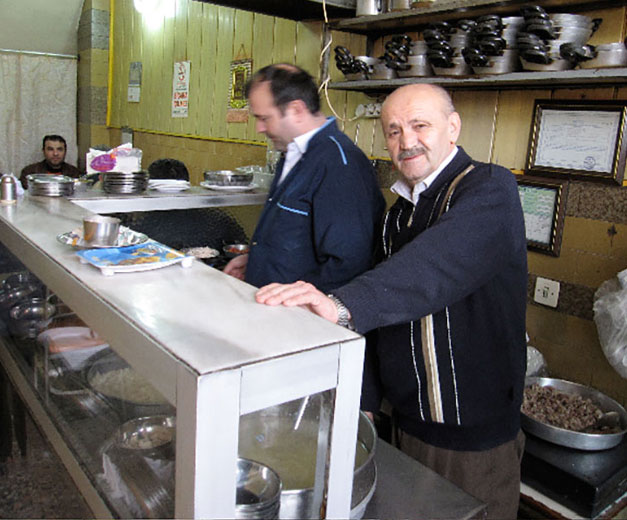We can't find the internet
Attempting to reconnect
Something went wrong!
Hang in there while we get back on track
Search results for
Istanbul
Meşhur Öz Suruç: The Yellow and the Green
To the uninitiated, the restaurant owners of a small corner of Istanbul’s Yenibosna neighborhood might come off as having an unhealthy obsession with particularly garish versions of the colors yellow and green. As we recently explored the lower end of the Yenibosna neighborhood, one of Istanbul’s large periphery boroughs, we stumbled upon a small cluster of kebap shops spread out amid a run-down yet bustling strip of auto repair shops and congested rows of apartments, with each eatery’s sign decked out in identical yellow and green trim.
Read moreIstanbul
Koco: Quest for the Holy Grill
Reviewers are often tempted into using metaphors that portray the restaurant as a sacred place -- the sushi temple, a t-bone pilgrimage, chili-cheese fry heaven. But in Istanbul’s Moda district on the Asian shore, we’ve found a praiseworthy fish restaurant that could justifiably be described as a shrine – literally. For more than 50 years, a local Greek family has been serving saints and sinners alike at Koco, a rambling seaside fish house situated atop an ayazma, or sacred spring. There’s meze and fresh grilled fish with raki upstairs, candles and a shot of holy water downstairs. Judging by the size of the dining room, Koco is preferred by very large groups. One recent weeknight, though, there were just enough customers to fill in the tables lined along the windows. The view of the old Moda ferry dock and the Marmara Sea from the window side of the room is excellent but leaves you leagues from the coat check where the staff hangs on a slow night.
Read moreAthens
Dionysus Returns: The Greek Wine Revival
There’s been a revolution taking place in Greece over the last couple of decades, and it doesn’t have much to do with the political and economic turbulence troubling the country – it’s all about wine. Wine in Greece, of course, has ancient origins: The first traces of it were discovered on the island of Crete and date back to 2500 BCE, during the Minoan civilization, and the oldest winepress in the world was found in the ruins of Vathypetro, near Heraklio.
Read moreIstanbul
Sıdıka: Last Night a Meze Saved Our Lives
It has been years now since we were first tipped to Sıdıka. The W Hotel had just opened in the splashy Akaretler rowhouse development. Vogue, the rooftop sushi lounge, was still in style. The Shangri-La hotel was under construction down on the waterfront, and it was rumored that some rooms would have Bosphorus views below sea level. Beşiktaş, long the bastion of cheap draft beer joints and university student flatshares, was having some growing pains.
Read moreElsewhere
Hanna Metri: Beirut's Baron of Booza
The end of summer in Lebanon can be tricky. Sometimes it begins to rain in September, causing our favorite summer places to close early; other times it stays hot and humid almost until December. While it’s still hot out, locals seek out one of the treasured regional deserts, booza. At first glance, it seems like ordinary ice cream, but the minute you scoop it up you soon realize this frozen ice cream has a gum-like stretch. Booza is typically known as Arabic ice cream and is made with mastic gum, which prevents it from melting quickly in the hot summers we usually face. Unfortunately, many of the more traditional booza shops have given way to overpriced gelato parlors that serve extremely sugary ice cream to mask their artificial flavors. Few remain that serve traditional Levantine ice cream made with fresh fruit and cream. Ask anyone where you can find this delight, however, and they’ll point you to Hanna Metri.
Read moreRio
Maya Café: Back to Basics
If there is a word to describe the Laranjeiras (“Orange Trees”) neighborhood, it is “pleasant.” Agradável. Agreeable. As you walk up its main drag, Laranjeiras Street, you pass by the creamy yellow and white façade of the elegant 19th-century National Institute for the Education of the Deaf on your right. Soon, on your left, you could come across the youth orchestra Camerata Laranjeiras playing free concerts at the General Glicério fair. It’s measurably Rio’s most progressive neighborhood – in the 2012 mayoral election, it was the neighborhood that most favored human rights activists and opposition candidate Marcelo Freixo (48 percent of the neighborhood voted for him in the election against Mayor Eduardo Paes, whereas the city as a whole voted only 28 percent for Freixo). Follow the rising street to its top and you’ll find yourself at the tourist train, ready to go visit the Christ statue.
Read moreIstanbul
Bus Fare: A Transit Terminal's Food to Go
The Yenibosna bus station sits at the intersection of numerous transit routes, where passengers can embark on journeys to the furthest corners of the city as well as to its beating heart. Close to Istanbul’s main airport, and wedged in beneath several high-rise towers that seem to have ascended from the ground overnight, the bus station sits adjacent to a major metro line and below the main E-5 highway, with the grubby, crowded neighborhood of Yenibosna to the north.
Read moreBarcelona
Norte: Northern Exposure
On a beautiful corner of L’Eixample sits Norte, a small yet warm, inviting and light-filled bar with a constellation of shining lights spelling out its name inside and a few tables with fresh flowers. The restaurant was started by three partners, Lara Zaballa, María González and Fernando Martínez-Conde (who left the project last year). They met while working at Barcelona’s acclaimed Moo restaurant and had come to cooking from studying philosophy, art history and journalism at university. They were each looking for something more hands-on, work that gave them direct physical contact with matter, and that shared motivation connected them from the beginning. All three also came to Barcelona from other cities in northern Spain. After their experience at Moo and other projects (Zaballa and Martínez-Conde wrote for the prestigious cooking magazine Apicius), they looked for a more enjoyable and less stressful way to do what they loved, starting with basically nothing but their enthusiasm and their solid ideas to convince the banks to give them a loan to start their own restaurant in 2011.
Read moreMexico City
Beatricita: Taco Centenarian
In a town that runs on tacos, tacos de guisado may be the most ubiquitous version of the iconic dish in Mexico City. They can be found almost anywhere in the city, from specialty restaurants to markets, tianguis and street vendors selling them at stalls or even out of the trunk of a car. It may be an obvious point, but what distinguishes some tacos de guisado from others is how well prepared the guisados (home-style cooked meats or vegetables typically displayed and kept warm in earthenware dishes called cazuelas) are – and sometimes those coming out of the back of a car top ones from more “established” places.
Read moreTokyo
Café Sakura: Every Hour Is Happy Hour
Roppongi’s Café Sakura serves as a restaurant and seating area for a bundle of businesses under the same ownership. There’s the Café with table service, the Wine Shop Sommelier (retail wines straight from the vineyard at considerable discount), L’Atelier du Pain (a Japanese-style bakery and cheese shop) and the French patisserie Coco Ange. Put them together and they enjoyably represent a Japanese take on the Western idea of “happy hour.”
Read moreElsewhere
BAPS Shayona: Beyond the Braai
In a country where people gather around outdoor braais (barbecue grills), chowing down boerewors (farm sausage), steaks and walkie talkies (chicken feet and heads), most would think a South African vegetarian would be an anomaly. On September 24, Cape Town will celebrate Heritage Day, which was recently also declared National Braai Day. Even Archbishop Desmond Tutu has become a “Braai for Heritage” supporter. The idea is that South Africans, once separated by law, can unite around a common national heritage of grilling meat, irrespective of politics, race and culture. Mealies (corn on the cob) are always welcome on the grill, but there’s yet another, more veggie-oriented side to South Africa’s “heritage.” Home to the greatest population of Indian descent outside India, South Africa has one of the largest concentrations of Hindus in Africa. Due to British colonial history, a large number of Indian traders and enslaved workers arrived in the country in the late 1800s. Even Gandhi spent his formative years on South African shores. And in a historically Indian neighborhood of Cape Town, a culturally vibrant street offers vegetarian delights whether or not there’s a shisa nyama (braaiing meat) public holiday.
Read moreTokyo
Uo-Katsu: The Holdout
Before Roppongi Hills rose from the warren of rambling streets, aging wooden homes and traditional Japanese ways nestled amongst embassies and Korean barbeque joints, Azabu Juban was a sleepy section of Tokyo, moored more in custom than the flashy markets and designer boutiques to come. The main shoten gai, or shopping street, was a classic example of Japanese daily life. Small mom-and-pop stores catered to neighbors, and after the third or fourth visit anyone could be a regular. The vegetable man would disappear into the back of his stand and produce a perfectly ripe melon before you had to ask; the flower vendor waved at her customers even if they weren’t in the market for flowers; and the shoe repair man admonished everyone for not shining their shoes regularly enough.
Read moreBarcelona
Els Tres Porquets: This Little Restaurant Went to the Market
Marc Cuenca was the kind of kid who was interested in what other people were eating, and this curiosity was the seed of his own restaurant, Els Tres Porquets ("Three Little Pigs"). A small enoteca and tapas bar with just a few tables, it sits in Poble Nou-El Clot, an area that brings to the restaurant a combination of locals, office workers and Spaniards and foreigners employed by startups and other businesses in the 22@ innovation district. While these days the city – and indeed many cities around the world – is teeming with restaurants specializing in an ambitious menu of small plates intended for sharing, in 2009, the concept was still quite new when the "three little pigs" arrived in the city.
Read moreRio
CB on the Road: Sun, Sand and Seafood in Barra de Guaratiba
Cariocas are doubly lucky. They live in a city bursting with natural beauty even in its concrete corners, where wide red and waxy abricó-de-macaco flowers grow in crowded plazas and you’re liable to have an overly ripe and spikey jacá fruit fall on your head as you rush to an appointment. For many, Rio is vacation, beaches, forests and samba clubs – enough to satisfy the craving for a life more exotic.
Read moreIstanbul
Uğur Manav: Vegetable Healing
Stretching 25 feet alongside a pharmacy in the heart of Istanbul's Şişli district, just a three-minute stroll from Osmanbey metro station (Pangaltı exit), lies Uğur’s fruit and vegetable stand. Day in and day out, come rain or shine, Uğur sits and smiles, utterly engulfed by the fruits and vegetables he sells. Hundreds of people stop by his stand every day: family, old childhood friends, local politicians, tourists.
Read moreElsewhere
Breakfast in Beirut, Part 2: Bohsali
An iconic Middle Eastern dessert, knefeh is to Lebanon what waffles are to Belgium. There are no records of its origins, but according to local legend the cheese-filled pastry comes from the Palestinian town of Nablus, and now it exists in different variations around the region, including in Lebanon.
Read moreRio
CADEG: 24-Hour Market People
Editor's Note: Sadly, this spot is now closed. Foreigners tend to see Rio as stretching from the Christ statue to the beachside neighborhoods, from Copacabana to São Conrado; the rest of the city just provides passage to the Atlantic. That’s a shame. Neighborhoods like Jacarepaguá, Madureira and Bangu have vibrant lives moving at a breathless pace and more intriguing locales than the typical postcard views of the city.
Read moreBarcelona
Best Buzz: Barcelona's Top Coffee Shops, Part 2
As we wrote in part one, specialty coffee has really taken off in Barcelona, after a long period of limited options and mediocre to bad beans and roasts. Here are a few more of our favorites among the new generation of coffee shops: True Artisan Café Elisabet Sereno, a Barcelonan nutritionist, coffee specialist, a founder of the Specialty Coffee Association of Europe (SCAE) and a judge in the World Barista Championship, opened this coffee shop in 2014. It was created as a showroom and also serves an educational role in improving specialty coffee culture in Barcelona and Spain by organizing events, demos and tastings. True Artisan is an official La Marzocco espresso coffee machine distributor showroom, an SCAE-certified training center and a comfortable bar to while away an afternoon diving into Arabica aromas, latte art, cups, gadgets and machines.
Read moreMexico City
Cochinita Power: Mayan Magic
Here in Mexico City, there are many restaurantes yucatecos that serve the cooking of the Mayan states, including two of our favorites, Máare and Coox Hanal. And a few months ago, an eatery with a fresh take on Yucatecan food opened its doors in Colonia San Rafael. As its name indicates, Cochinita Power specializes in the region’s best-known dish, cochinita pibil. The traditional version consists of pork marinated in an acidic sauce made from achiote (annatto seeds) and Seville oranges, wrapped in banana leaves and roasted in an underground pit. At Cochinita Power, the meat is not roasted underground, but chef Alexis Estrada cooks the mouthwatering cochinita on the stovetop until the meat is incredibly tender and deeply imbued with all the spices and flavorings he adds to it.
Read moreIstanbul
CB Book Club: Aylin Öney Tan’s A Taste of Sun & Fire
For many (us here at Culinary Backstreets included), the city of Gaziantep is without a doubt the culinary mecca of Turkey. Located not far from Turkey’s southern border, a meeting point between the Arab Middle East and Turkish Anatolia, Gaziantep over the centuries has developed a culinary culture that is deeply rooted in the rhythm of the agricultural lands surrounding it and that is maintained with great pride and honor by the city’s cooks and food makers. Gaziantep is also the source for many of Turkish cuisine’s iconic dishes – the city’s famous baklava is without compare and its kebabs are truly works of art, the standard by which all others are measured.
Read moreMexico City
Con Sabor a Tixtla: From Guerrero, with Love
Mexican cooking is clever. With just a handful of ingredients, each region of the country has managed to create a unique cuisine that reflects local lifestyles and traditions. This fact is made abundantly and deliciously clear at Con Sabor a Tixtla, a small, family-owned restaurant in Mexico City’s hip, vibrant Roma neighborhood. Located on a quiet street not far from Mercado Medellín, the restaurant specializes in food from Guerrero, a southwestern state – home to the famous resort town of Acapulco – known for its seafood and its green pozole, a meat and hominy stew that is one of Mexico’s most iconic dishes.
Read moreShanghai
Yuyang Laozhen: Farm to Table
Shanghai’s farm country is closer than most residents imagine, especially when surrounded by the city’s seemingly endless forest of skyscrapers. But just beyond the spires is a huge, green oasis: Chongming. Somewhat smaller than Hawaii’s Kauai, this island at the mouth of the Yangtze River grows much of the municipality’s food supply. The government is pushing plans forward to develop the area with “eco-friendly” industries by 2020 but, as usual, has not provided many details on how these goals will be achieved. A stopping point for millions of migratory birds each year, the island (for now) has several wetland zones and ecological parks that are open to visitors, making it a worthwhile jaunt for those wanting to escape Shanghai’s urban jungle.
Read moreIstanbul
Hamo'nun Yeri: The Early Bird Gets the Chickpea
During our previous trips to Istanbul’s “Little Gaziantep” – where we enjoyed the special techniques of Turkey’s culinary nerve center at the excellent Hizmet Kardeşler – we were tempted by what lay across the street. It was an alluring sight scarcely seen in Istanbul: the simple yet scrumptious nohut dürüm. The wrap of chickpeas, parsley and spices nestled within a formidable section of tırnaklı ekmek flatbread is the specialty at Hamo’nun Yeri (Hamo’s Place). Run by a family with roots in the Gaziantep district of Nizip, the restaurant’s name comes from the family patriarch.
Read moreAthens
CB on the Road: A Food Lover's Guide to Andros
Some islands, Mykonos and Santorini for example, are known for their temples of gastronomy. Others, like Tinos, Milos, Syros and Sifnos, possess solid reputations for uniformly excellent tavernas. Until recently, Andros, a green anomaly in the treeless, windswept Cycladic chain, had two main attractions for tourists: a world-class modern art museum and a network of well-maintained hiking trails. You could get a decent meal after you’d seen the exhibition in Hora or trekked up to a 1,000-year-old monastery or down a river lined with water mills, but it wouldn’t be something to write home or tweet about.
Read moreBarcelona
Best Buzz: Barcelona's Top Coffee Shops, Part 1
In Spain, as in the U.S. and elsewhere – even as we hit coffee pod peak – a new multicultural generation of specialty coffee shops are discovering and sharing with their customers the best ways to experience all the special characteristics of truly great coffee. Spain’s cities share the urban Mediterranean tradition of strong short coffee, very much influenced by Italian espresso and served in small cups or glasses, with tons of sugar and perhaps also liquors (orujo or aguardiente, anís, coñac). Much of the time, the quality of this coffee could really hurt your body and soul. It’s made from cheap, low-quality Robusta beans that undergo torrefacto (toasted at 200 degrees C with sugar) – once a technique to keep flavor and increase weight but now widely regarded as a way to hide terrible qualities or to ruin any coffee. At the same time, in the countryside and in small villages, café de puchero, coffee made in a pot and filtered with a cloth, much lighter and more diluted than espresso, was always the brewing method of choice before the rise of the stovetop moka pot.
Read moreRio
Diamonds in the Touristy Rough: Makalo
The quiet neighborhood where Makalo is located, right between Syntagma and Plaka, is home to some good restaurants (such as old-fashioned Paradosiako) and even to a strip of ethnic joints located on bustling Apollonos Street. Considering the area’s proximity to some of the biggest hotels in Athens and to the ultra-touristy Plaka, however, it’s rather surprising that not many visitors have caught on to the charms of Makalo, a local hangout with a fun vibe and great Greek-style cocktails.
Read moreTokyo
Ma-Suya: Salt Mine
Japanese cuisine is often the art of quiet subtlety, and to that end, salt is one of its greatest supporters. The freshest of fish can be highlighted with a splash of the correct salt; cold sake drunk from fragrant cedar vessels is well enhanced with salt on the rim; and even tempura is frequently not dunked in sauce but instead sprinkled with salt by serious connoisseurs of fried delicacies. Salt plays a very significant role in Japanese culture and religion. It is a sign of purification. Thus most sushi restaurants mound salt on both sides of the entrance to show the place is clean and pure. Sumo wrestlers will throw salt into the ring before a match. Japanese people frequently throw salt over the entrance to their homes to purify their households. We’ve even seen people with packets of salt in their car.
Read moreBarcelona
Pintxos: Basque Bites
Oriol’s face lights up whenever a customer selects his favorite pintxo from one of the 49 different trays, beautifully displayed at Euskal Etxea, the bar where he works and the first bar in Barcelona to serve traditional Basque pintxos. One wonders how a small slice of bread topped with a chickpea fritter, jamón serrano and romesco sauce spiked with a toothpick that costs just €1.95 can make someone so happy. We try one and we immediately see why.
Read moreTbilisi
Cafe Littera: Don't Call It Fusion
We are sitting under the tonic canopy of an enormous pine tree in a hidden Tbilisi garden, licking our lips over menu items that are neither European nor Georgian. When our dining companion informs us she will not share her trout tartare with adjika (highly concentrated spicy red pepper paste), we realize there will be no plate-dipping tonight. Just as we settle on our main courses, a woman in a blue chef’s jacket comes up to our table, beaming bonhomie, and asks if she can help us in any way. This is Tekuna Gachechiladze, the blue-eyed Tbilisi chef dedicated to changing the way Georgians understand their food culture. We are sitting at her latest culinary venture, Cafe Littera.
Read moreRio
Primeira Pá: Chinese, Made in Brazil
For a country of Brazil’s size (pop. 190 million), the number of foreigners in the country is pretty miniscule. Less than 1 percent of the country’s residents are foreign-born; the top countries of origin for those foreigners are the U.S., Japan and Paraguay. (By comparison, about 13 percent of the U.S. population of 319 million is foreign-born.)
Read moreIstanbul
Hizmet Kardeşler: Little Gaziantep in Istanbul
The T1 tramway route passes by virtually all of Istanbul’s most well-known sights. Crossing the Galata Bridge and weaving through the Old City, the T1 practically rubs up against the Hagia Sophia, Topkapı Palace, the Grand Bazaar and other famous attractions, ensuring that most foreign visitors to the city will ride this tram within a five-stop radius. But after the T1 rumbles past the old city walls, it snakes its way northeast through a dense patch of working-class districts usually ignored by tourists. Dreary on the outside though they may look, many of these neighborhoods are laced with off-the-beaten-path charm and culinary delights hidden in plain view.
Read moreMexico City
Fonda Mi Lupita: Holy Mole
We’ve written about mole before, but it’s possible that there aren’t enough words to spill on such a complex dish – probably the most complex in all of Mexican cuisine. Mole has become part of the mainstream culinary scene in Mexico, and many restaurants now sell it every day of the year. However, very few places are mole-only eateries, and even fewer have a mole great enough to have sustained business for decades. One of our favorite eateries, Fonda Mi Lupita, a small fonda in the Centro Histórico that started making mole in 1957, holds that rare distinction.
Read moreElsewhere
Kalky's: Fried Fish Paradise
Fresh fish caught daily in the icy Atlantic Ocean – this is the key to the longtime success of Kalky’s, the original fish and chips restaurant in the seaside village of Kalk Bay, one of South Africa’s oldest working harbors. In the summer of 1996, the Rosslind family started this small takeout café serving satisfying fried hake (cod) and snoek (mackerel), with fish supplied by the local fishermen of Cape Town’s Kalk Bay. Kalky’s size and menu have since grown, reflecting the harbor’s rich cultural and nautical history. But it remains a no-frills, no-fuss seafood spot, where utensils are optional and cash is king.
Read moreBarcelona
Country Dining: The Catalan Masía
As in many other rural parts of Europe, the Catalonian countryside is dotted with large, old farmhouses, legacies of feudalism that have since been converted into hotels, bed-and-breakfasts and restaurants. The origins of these masías, as they’re known in Catalan, go back to the 11th century, but it was not until the end of feudalism in the 16th century that the former serfs turned masías into their own self-run farm holdings and homes. The buildings that survive today may be of a more recent vintage, built perhaps a century ago, sometimes older. Masías were usually named after the family who owned them; “Can Josep,” for example, means “house of Josep.”
Read moreElsewhere
Breakfast in Beirut, Part 1: Abu Hassan
Breakfast in Beirut can be a lavish affair and would make even the Ottoman sultans of old jealous. Although Beirut is known as a 24-hour city, with a lively nightlife scene fused with an endless amount of social gatherings, people still find time to enjoy a long morning meal with loved ones on weekend mornings. The ingredients of Lebanese breakfast foods are quite simple – chickpeas, yogurt, eggs, tahini, lemon juice, ground meat, bread and olive oil – and are assembled in a number of ways that make breakfast something not to be missed while in Beirut.
Read moreMexico City
Ask CB: What Are Aguas Frescas?
Dear Culinary Backstreets, I’ve heard about drinks in Mexico called “aguas frescas,” but what exactly are they? Visitors to Mexico are sure to encounter aguas frescas, a popular category of drinks that are ubiquitous at food stands and eateries around the country. These colorful beverages, whose name literally means “fresh waters,” come in a variety of different flavors depending on the main ingredient, but generally all are made by mixing a fruit juice with water and sugar.
Read moreIstanbul
Kelle: Face Off
Don’t people just love to fight about food? Punch-ups over which city makes the best pizza, brawls about what’s the right way to barbecue. Louis and Ella nearly called the whole thing off over the pronunciation of the word “tomato.” In this pugilistic spirit, we took our place at a couple of stools at our favorite back of the fish market corner bar, Asmaaltı, from which to call one of the great barroom debates of these parts: Is a sheep’s head, or kelle, more tasty when boiled and served chilled or roasted and served hot?
Read moreShanghai
The Shanghai Soup Dumpling Index: Can You Measure Good Taste?
Back in 2012 when Culinary Backstreets still had that new car smell, we wrote our first article on xiaolongbao. The investigative report detailed the bun’s regional variations – Shanghai versus Nanjing – and called out our two favorite places to eat each city’s specialty soup dumplings. Understanding, appreciating and loving these local specialties is a part of life for residents of pork-obsessed Shanghai. Arguing the merits of different restaurants’ xiaolongbao is a citywide pastime for both locals and expats alike, but one man has taken the fascination further than the rest of us combined.
Read moreTokyo
Gontran Cherrier Shibuya: Sweet Dreams
It’s a common fantasy: Accidentally locked in a bakery, forgotten overnight, we quickly eat everything in sight and fall into a sugary, carb-filled dream of sweet-spun bliss. Sequestered away where nobody will find us until morning, we wake from time to time and continue to eat cakes until we sleep again. Short of that happening in this lifetime, we frequently daydream of walking the aisles of bakeries, latte in hand as we pull pain au chocolat and sticky buns from racks, consuming everything in a hurried rush before we’re asked to leave.
Read moreRio
Prana Cozinha Vegetariana: Move Over, Churrasco
We hear it every time we bring up the V-word: “But it’s impossible to be a vegetarian in Rio!” Nonsense. Not only is it possible to eat an earthy diet here in Rio, it’s getting so trendy that carnivorous cariocas are increasingly forgoing their weekend churrasco (grilled meat on a stick) for the kaleidoscope of couve (collard greens), cogumelos (mushrooms), tofu and all of its soy brethren. (Remember: Brazil is a soy powerhouse, one reason why China surpassed the U.S. to become its largest trading partner.)
Read moreAthens
Dexameni: From the Womb to the Tomb
The blackboard hanging outside Dexameni’s cramped kitchen reads, “Kindergarten-Bar-Nursing Home,” the title jokingly bestowed upon the café by the eminent novelist and poet Alexandros Papadiamantis. He was among the literati who made Dexameni their regular hangout shortly after it opened in the early 1900s – so regular that the place ended up serving as a home-away-from-home for all stages of life.
Read moreIstanbul
CB on the Road: Off the Beaten Path on Turkey's Turquoise Coast
Along the southwestern coast of Turkey, the vibrant blue waters of the Mediterranean crash against dry, rocky mountains jutting from the water’s edge. For centuries, pilgrims and adventurers alike have scrabbled over the unforgiving terrain between Fethiye and Antalya known as the Lycian Way. Ruins dating back to Greek and Roman times nestle between the scrubby trees and undergrowth, melding with the landscape and painting a picture of the life that has always dotted the shore. The Turquoise Coast is a popular place to visit in the summer, with massive sand beaches and countless pansiyons catering to every type of tourist. While most people visit this region for its stunning vistas and beaches, it has exceptional food if you know where to look.
Read moreTokyo
Daruma: Good Luck Ramen
Almost 40 years ago Daruma opened its doors near Aoyama University, feeding the hungry students who flocked there, along with many neighbors and workers from the nearby office buildings. The prices were reasonable and the ramen was top class. Everyone came for the original recipe: Japanese-style ramen, with fresh house-made noodles and a pungently addictive broth of pork, chicken legs and vegetables, spiked with shoyu (soy sauce). Daruma opened as just a great place to fill your stomach with good food.
Read moreShanghai
Sleight of Hand: Lanzhou, Henan and DIY Noodles
Wandering around Shanghai’s quieter streets, you may often hear a thump thump thwack! ringing out from a streetside café. If you’re lucky, it means someone is pulling noodles fresh to order, and if you’re even luckier, you’ll happen to be hungry enough to enjoy a bowl.
Read moreIstanbul
Cuma Usta: Anatolian Snow Cone
Standing behind the counter at his small bici bici shop in Gökalp Mahallesi, a neighborhood in the Zeytinburnu district of Istanbul, Cuma Usta recalls the first time he headed up into the mountains with his uncles in search of wild ice, one of the key ingredients in this Turkish snow cone treat sold from street carts throughout southern Turkey. His uncles had gone up in the winter and cut large slabs of ice from the mountaintop, wrapped it in old blankets and hauled it off with a donkey to a nearby cave. In July, with young Cuma – just being introduced to the ways of bici bici – in tow, they headed back to the cave to collect the ice. It took a couple of hours by car, as he recalled, and the ride back to Adana, vehicle loaded with the frozen bounty, was nice and chilly. Then they’d use that ice to make the summertime street food favorite bici bici (pronounced like the disco-era band of brothers from Australia) and sell it from pushcarts. According to tradition, a bici bici master is, firstly, a harvester of ice.
Read moreBarcelona
Catalan Ice Cream: The Real Scoop
As you might expect from a city whose weather forecast tends to be sunny, Barcelona has plenty of excellent ice cream options, even as summer fades into fall. And, sure, like most of the world’s food-loving metropolises, this town has its share of internationally loved, Italian-style gelaterias – many even run by real, live Italians.
Read moreMexico City
Café de Raíz: Veracruz in the D.F.
The cuisine of Mexico City has long been influenced not only by waves of international immigrants but also by regional cooking from around the country. In the mid-20th century particularly, droves of workers and their families, lured by economic opportunities, arrived in the Distrito Federal from every corner of Mexico, bringing their local customs and food traditions with them and greatly enriching both the city’s culture and its culinary scene.
Read moreIstanbul
Kısmet Muhallebicisi: Funky Chicken
Ali Bey, the owner of a cubby-sized restaurant in Küçük Pazarı called Kısmet, sounded a bit like Bubba Gump listing the items on his menu: “We've got chicken soup, fried chicken gizzards, shredded chicken breast, dark chicken meat too, chicken and rice, chicken with onions and peppers, and chicken breast pudding for something sweet.”
Read more


